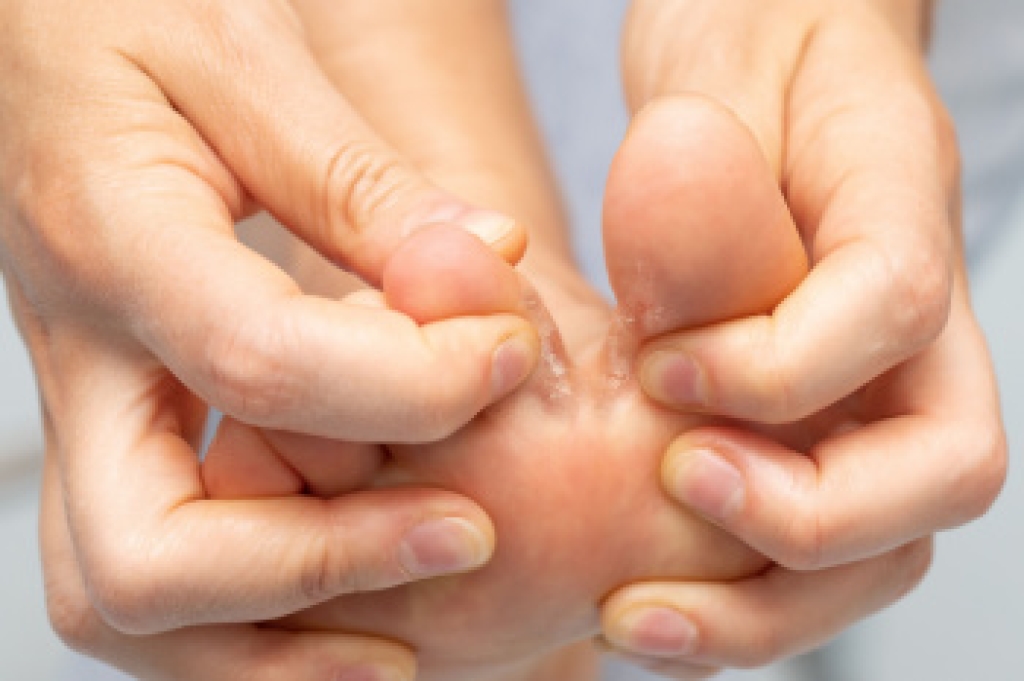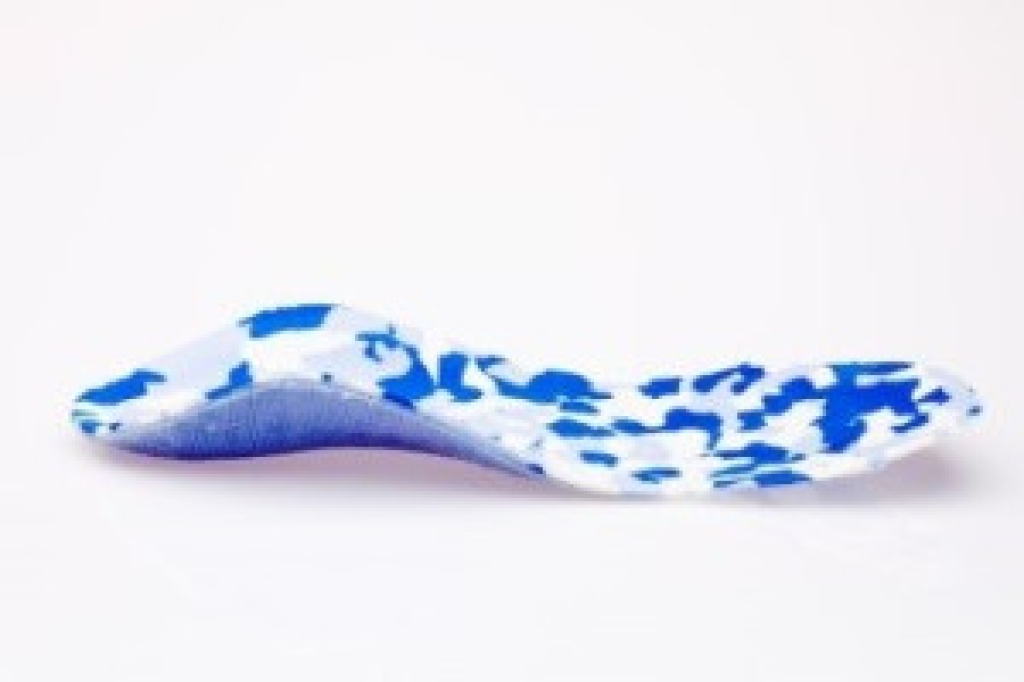
Athlete’s foot, also called tinea pedis, is a fungal infection that commonly affects the skin on the feet. It often begins between the toes, where moisture and warmth allow fungi to thrive. Symptoms of athlete’s foot include itching, redness, peeling, and a scaly buildup on the skin. In some cases, painful cracks or fluid-filled blisters may develop, and the soles of the feet thicken over time. Untreated athlete’s foot can lead to secondary bacterial infections, especially when skin breakdown occurs. People who wear tight shoes or frequently walk barefoot in communal areas, like locker rooms or showers, are more at risk. A podiatrist can examine the affected area and confirm the diagnosis, sometimes with a skin scraping for microscopic evaluation. Treatment includes antifungal medication applied directly to the feet, or, in some cases, taken orally. If you have symptoms of athlete's foot, it is suggested that you schedule an appointment with a podiatrist for an exam and appropriate treatment.
Athlete’s Foot
Athlete’s foot is often an uncomfortable condition to experience. Thankfully, podiatrists specialize in treating athlete’s foot and offer the best treatment options. If you have any questions about athlete’s foot, consult with Derek Smith, DPM from Oklahoma. Our doctor will assess your condition and provide you with quality treatment.
What Is Athlete’s Foot?
Tinea pedis, more commonly known as athlete’s foot, is a non-serious and common fungal infection of the foot. Athlete’s foot is contagious and can be contracted by touching someone who has it or infected surfaces. The most common places contaminated by it are public showers, locker rooms, and swimming pools. Once contracted, it grows on feet that are left inside moist, dark, and warm shoes and socks.
Prevention
The most effective ways to prevent athlete’s foot include:
- Thoroughly washing and drying feet
- Avoid going barefoot in locker rooms and public showers
- Using shower shoes in public showers
- Wearing socks that allow the feet to breathe
- Changing socks and shoes frequently if you sweat a lot
Symptoms
Athlete’s foot initially occurs as a rash between the toes. However, if left undiagnosed, it can spread to the sides and bottom of the feet, toenails, and if touched by hand, the hands themselves. Symptoms include:
- Redness
- Burning
- Itching
- Scaly and peeling skin
Diagnosis and Treatment
Diagnosis is quick and easy. Skin samples will be taken and either viewed under a microscope or sent to a lab for testing. Sometimes, a podiatrist can diagnose it based on simply looking at it. Once confirmed, treatment options include oral and topical antifungal medications.
If you have any questions, please feel free to contact our offices located in Ponca City, and Stillwater, OK . We offer the newest diagnostic and treatment technologies for all your foot care needs.


 Orthotics
Orthotics
